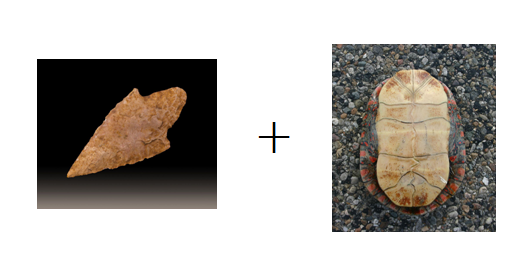How to read Chinese characters
How to read Chinese characters
(Not Chinese as a language)
(this is my first steemit post. Gosh I'm so nervous now.)
For those who interested in Chinese markets, learning Chinese language is a must. However, the language and character is vastly different from those of Western languages. Even the CIA officially announced Chinese is one of the most difficult languages for Americans. If you are frustrated Chinese learner, then this article is for you.
From where I live, Chinese culture is dominant. It's easy to bump into Chinese among daily words and expressions. We Koreans say "annyeong(안녕)" as meaning of "hi". Even this word is from Chinese("安寧"). Still many Koreans are not aware of this. Because we use a different character system. Not just that, rapid development of smart phone has worsened the situation. Many young Koreans born in this generation don't know how to read Chinese letters. As for me, I was a Chinese illiterate for more than 2 decades. I've finally learned how to read it after 25. So I do understand the westerners' frustration toward Chinese letters.
Basics
It's widely known that Chinese letters are similar to ancient hieroglyph. For simpler studies, check out this very famous TED clip:
To wrap it up, most basic(fundamental) Chinese letters are in fact simplified hieroglyph.(Surely not 100% hieroglyph. This is an euphemism, just to make stuff easier.)

夕 night /xi/
For example, this letter means moon. As the look suggests, it's easy to trace the meaning. This must have been how the ancestors drew moon on a stiff surface with a pointy stick in hand.

*The earliest form of Chinese was written in turtles' hard belly bone with pointy stuff. Drawing a round shape must have been very difficult on this one.
The letter below is way easier. You know the answer already.

人 person /ren/
pretty obvious, right?
Radicals & Complex Letters
but problem arises when if you want to go further. Let's say this letter is written on paper this time:
然
What is it supposed to mean? the top left side of the character looks similar to the moon(夕), top right side resembles to person(人); does it mean the same stuff? The answer is no. See, Chinese letters often mean something radically different when 1) a small dot, a line is added or 2) it is put in different position, different angle. Chinese letters are hieroglyph with very rigid rules.
and furthermore, these small letters form a bigger letter. These small components are called radicals(部首, 부수).

Essentially, radicals are just basic words. So basic words can be both a radical, part of a larger letter or just a word which has a meaning by itself. Then which word becomes a radical? unfortunately, there is no fixed rule for that. The learner is supposed to memorize the whole 200 something radicals(the numbers can vary by nations, languages but approximately around 200) for future combinations. I have to say these radicals are the real alphabets of Chinese words. The memorization is not that difficult because they mostly took after where they got the meaning from.
Deciphering the meaning
Learning radicals has a big advantage; since radicals work as a basic alphabet of more complex letters, it also serves 1) the purpose of dictionary index. 2) Learners can assume meaning or sound of a certain words from radicals.
Let's decipher the word above this time:

so these radicals mean clockwise, 1) meat, 2) animal, 3) fire.
This elements create a story.
a live animal(犬) is → burnt on fire(火) → thus live animal becomes an edible meat(肉).
This shows a typical natural phenomenon. As a result, the combination 然 means nature, naturally.
for the sound, since the word 人 has /ren/ ("run" from running) sound, 然 has /ran/ ("ran" from Iran) sound.
It doesn't work as it should sometimes. However, the learner has a freedom to make up a story or a clue to remember it easily. Some words have an obvious combination but some words have really strange combination. Some of unobvious words have an 'official' explanations but some others have lost the explanations behind the meaning. The learner has to be flexible, in order to decipher the meanings.
Confusion
Chinese letters are very confusing, especially for beginners. Some words have more than just one sound, more than one meaning. Some words are very identical, but yet a very different word.
There is a reason for that. The letters were made rather arbitrarily at first. But since each letter represents each stuff, there were tons of stuff to memorize. Unlike alphabets, where you just need to 26 letters to write and read. Then a new emperor got a crown, he/she notices it takes too much toll on education, government works where everything has to be written down on expensive paper(especially in that era)by small number of well educated people. The emperor merges similar looking letters and gets rid of anything redundant. It creates a confusion for modern learners but I have to say this was inevitable.
It is confusing but most of them makes a sense. For example,
月
This means 1)moon, but also means 2)month. The concept of month was born by observing the movement of the moon, which revolves around the earth for about 29.5 days. (https://en.wiktionary.org/wiki/month) and this also represents 3)meat, which sometimes represented by 肉. Since letter '肉' is much more complex, 月 is sometimes used as a simpler substitute. If it is used as a radical, it can be pretty much anything what it resembles, such as bone(ribcage), altar, boat, etc. but normally, it's just meat, moon or month.
The best way to overcome this problem, is learning all 200 something radicals, make up a story for each more complex words. Then write it down in a notebook or somewhere.
What to learn
When we say Chinese, everyone may think of the Chinese language from mainland China. However, Chinese was an international trade language back thousands years ago among Asian countries. Just like English does these days among European countries. Now, as the influence of Chinese has diminished, Korea and Japan are the only remaining users of Chinese letters.
The learner can learn Chinese as a language, or just the letters to learn other Asian languages such as Japanese and Korean. The learner doesn't have to learn whole Chinese language in order to understand these letters. The knowledge of Chinese letters can be adapted into many ways. I have summarized the basic features for those who interested in learning Chinese letters.
Japanese Chinese
- Pronunciation: Easy
- Stroke: Somewhat complex
- Usage: Many
- Amount: Somewhat many
-Highly influenced by Buddhism; some words have an odd usage due to religious meaning
-Most easy to pronounce
-Smaller number of strokes compare to Korean Chinese, yet not smaller than Simplified Chinese
Korean Chinese
- Pronunciation: Difficult
- Stroke: Complex
- Usage: Many
- Amount: Smallest
-Only small number of Chinese letters is officially used; don't have to memorize a lot
-Most difficult to pronounce
-Words are complex, many strokes
and also Chinese have two different form.
Simplified Chinese
- Pronunciation: Somewhat difficult
- Stroke: Easy
- Usage: Not a lot(Only Mainland Chinese people use)
- Amount: Many
-Pronunciation itself is easy, but need to memorize musical 'tones'
-Simplest. Smallest strokes.
Traditional Chinese
- Pronunciation: Somewhat difficult
- Stroke: Complex
- Usage: Most widely used(similar to Japanese, Korean Chinese)
- Amount: Largest amount
-Similar to Korean and Japanese Chinese.
-Oldest form of Chinese preserved, many strokes. If understood, other Chinese forms are easy.
-Pronunciation difficulty is similar to simplified Chinese.
Historically, Simplified Chinese is the latest invention. Korean, Japanese Chinese and Traditional Chinese is the earlier form of Chinese. Pronunciations are different to nations but they sound similar, so the knowledge can be later used in different languages. Don't worry if you made a wrong choice. It'll help you learn a new thing later anyway :)
In a simpler term, my recommendations are:
If you are interested in learning Chinese letters but worried about difficulty,
then choose Japanese Chinese.
If you are an avid learner and seeking an extensive knowledge,
then choose Traditional Chinese.
Thanks for the post, chinese in my opinion might be one of the most difficult language to learn, alongside with latin. Learning how to read chinese is still ok, but learning to write and recognize is definitely not easy as every word is so unique to itself.
Thanks! Chinese letters are very interesting indeed. Every character has its own history, represents our ancestors' view toward the object. Every time I learn more of them, I feel like seeing through thousands years of history.